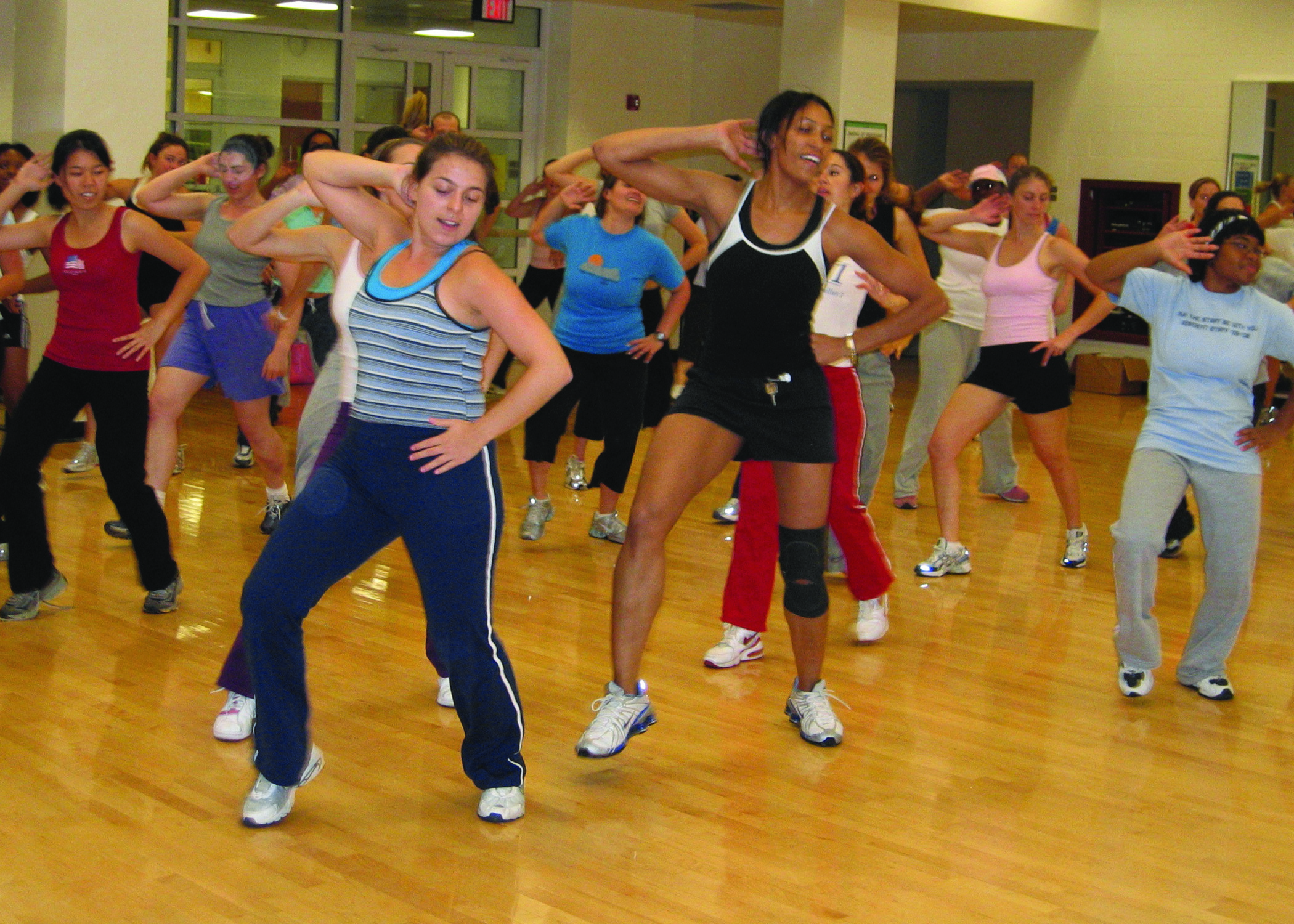April 9, 2008 — When most people think of making a trip to the gym, they imagine running laps on the track or lifting weights, not learning African dance steps or Japanese sword fighting techniques. However, as the student population of the University of Virginia has become more ethnically diverse, so have the opportunities to get a good workout offered by the school's Department of Intramural-Recreational Sports.
According to University's Office of Institutional Assessment and Studies data, from 2000 to 2007, the percentage of minority on-grounds undergraduate and graduate students, including non-resident international students, increased from approximately 26 percent to 29 percent. Mark Fletcher, director of IM-Rec Sports, said he has also seen an increase in the number of fitness classes and club sports associated with specific ethnic traditions on grounds.
"The changing diversity of the student population and its impact on the University Recreation programs and facilities is an interesting topic," Fletcher said. "The club sports program, which is one of the largest in the country, has increased in recent years in the areas of dance and martial arts. Both of these areas are greatly influenced by increasing cultural diversity."
His department now offers instruction in the Karatedo, Tai Chi, Iaido, and Tae Kwon Do martial arts traditions, as well as ethnic dance classes such as Salsa and Kukuwa. Kukuwa dance combines Latin, African and Caribbean influences into an aerobic workout.
U.Va. undergraduate student Ana Losada, who teaches Tae Kwon Do for the department, said diverse fitness programs, including her martial arts classes, help increase appreciation of different cultures at the University.
"Not only is it a great way to keep in shape, but it is an insight to a very humble, disciplined and rich culture most people don't really understand," Losada said. "The opportunity to explore other cultures is definitely available for students, but it is up to the student to take a step and take advantage of the activities U.Va. has to offer. In the long run, this can have a tremendous impact on the way students interact and view other cultures."
Growing recreational diversity can also be seen in U.Va.'s competitive intramural and club sports. According to Fletcher, the number of intramural indoor soccer teams increased from 116 to 141 from the fall of 2005 to the fall of 2007 and his department now handles more indoor soccer teams than football teams.
"We have seen an increase in activities, such as badminton, table tennis, tennis and soccer," Fletcher said. "Many of these have stronger bases in other countries then in the U.S."
Fletcher added that his department, which was rated the best in the country in 2005 by U.S. News and World Report, will continue to adjust its offerings to fit the demands of the ever-shifting University population.
"In the future, I simply believe that we need to continue to be aware of the changing dynamics of the student population, whatever that might be, and make sure that we are offering quality programs to meet the needs of all that are at the University," Fletcher said.
For more information on U.Va. Intramural and Recreational Sports, visit www.virginia.edu/ims.
According to University's Office of Institutional Assessment and Studies data, from 2000 to 2007, the percentage of minority on-grounds undergraduate and graduate students, including non-resident international students, increased from approximately 26 percent to 29 percent. Mark Fletcher, director of IM-Rec Sports, said he has also seen an increase in the number of fitness classes and club sports associated with specific ethnic traditions on grounds.
"The changing diversity of the student population and its impact on the University Recreation programs and facilities is an interesting topic," Fletcher said. "The club sports program, which is one of the largest in the country, has increased in recent years in the areas of dance and martial arts. Both of these areas are greatly influenced by increasing cultural diversity."
His department now offers instruction in the Karatedo, Tai Chi, Iaido, and Tae Kwon Do martial arts traditions, as well as ethnic dance classes such as Salsa and Kukuwa. Kukuwa dance combines Latin, African and Caribbean influences into an aerobic workout.
U.Va. undergraduate student Ana Losada, who teaches Tae Kwon Do for the department, said diverse fitness programs, including her martial arts classes, help increase appreciation of different cultures at the University.
"Not only is it a great way to keep in shape, but it is an insight to a very humble, disciplined and rich culture most people don't really understand," Losada said. "The opportunity to explore other cultures is definitely available for students, but it is up to the student to take a step and take advantage of the activities U.Va. has to offer. In the long run, this can have a tremendous impact on the way students interact and view other cultures."
Growing recreational diversity can also be seen in U.Va.'s competitive intramural and club sports. According to Fletcher, the number of intramural indoor soccer teams increased from 116 to 141 from the fall of 2005 to the fall of 2007 and his department now handles more indoor soccer teams than football teams.
"We have seen an increase in activities, such as badminton, table tennis, tennis and soccer," Fletcher said. "Many of these have stronger bases in other countries then in the U.S."
Fletcher added that his department, which was rated the best in the country in 2005 by U.S. News and World Report, will continue to adjust its offerings to fit the demands of the ever-shifting University population.
"In the future, I simply believe that we need to continue to be aware of the changing dynamics of the student population, whatever that might be, and make sure that we are offering quality programs to meet the needs of all that are at the University," Fletcher said.
For more information on U.Va. Intramural and Recreational Sports, visit www.virginia.edu/ims.
— By Catherine Conkle
Media Contact
Article Information
April 9, 2008
/content/university-virginia-recreation-offerings-reflect-growing-diversity-student-population

